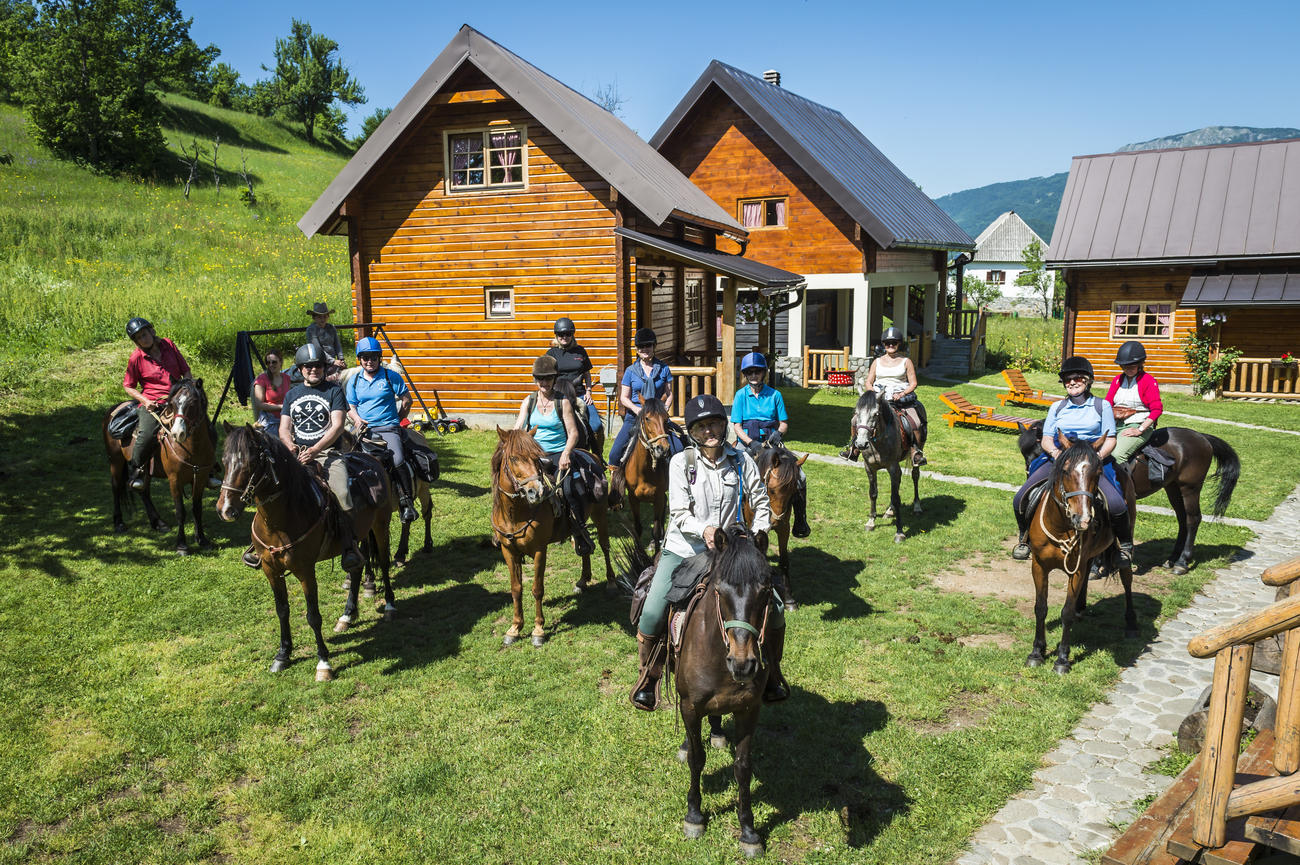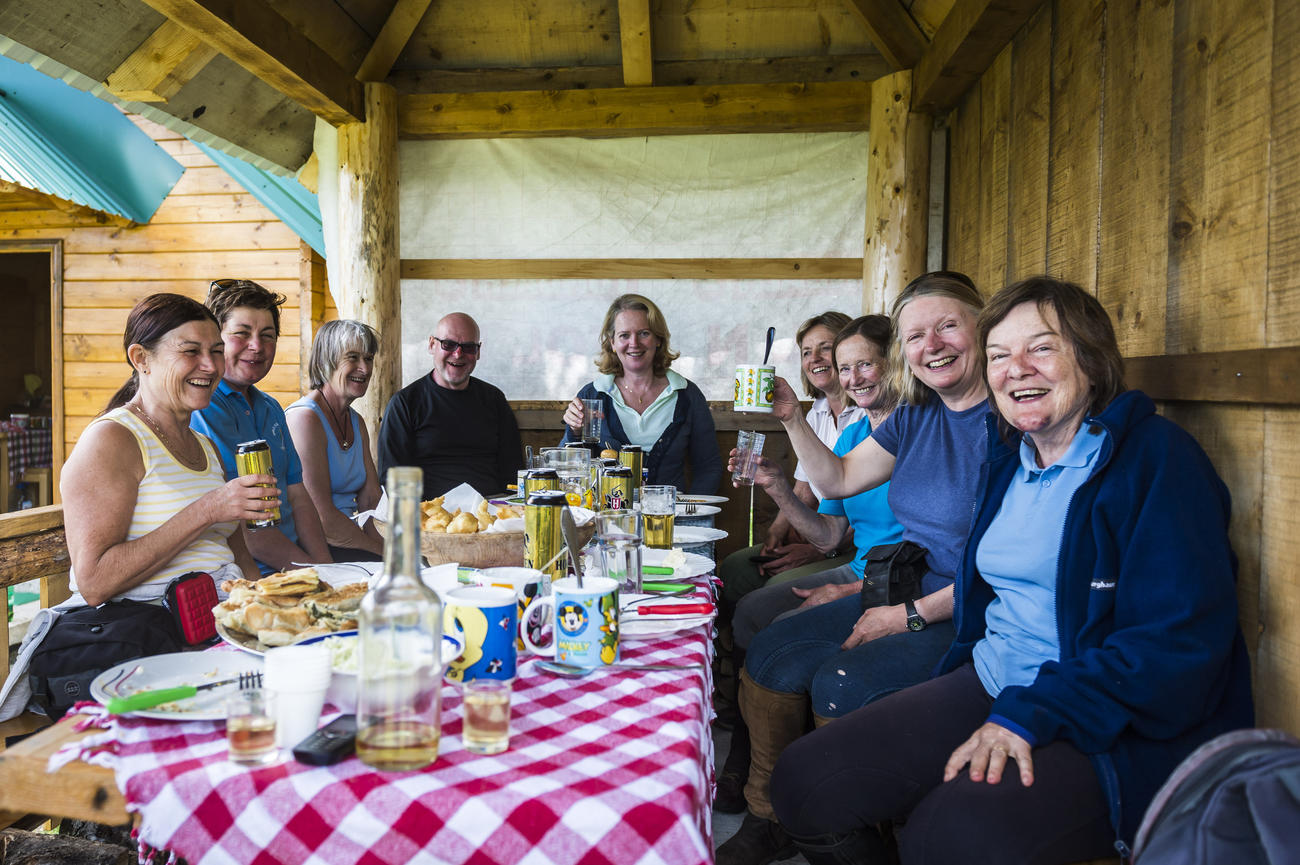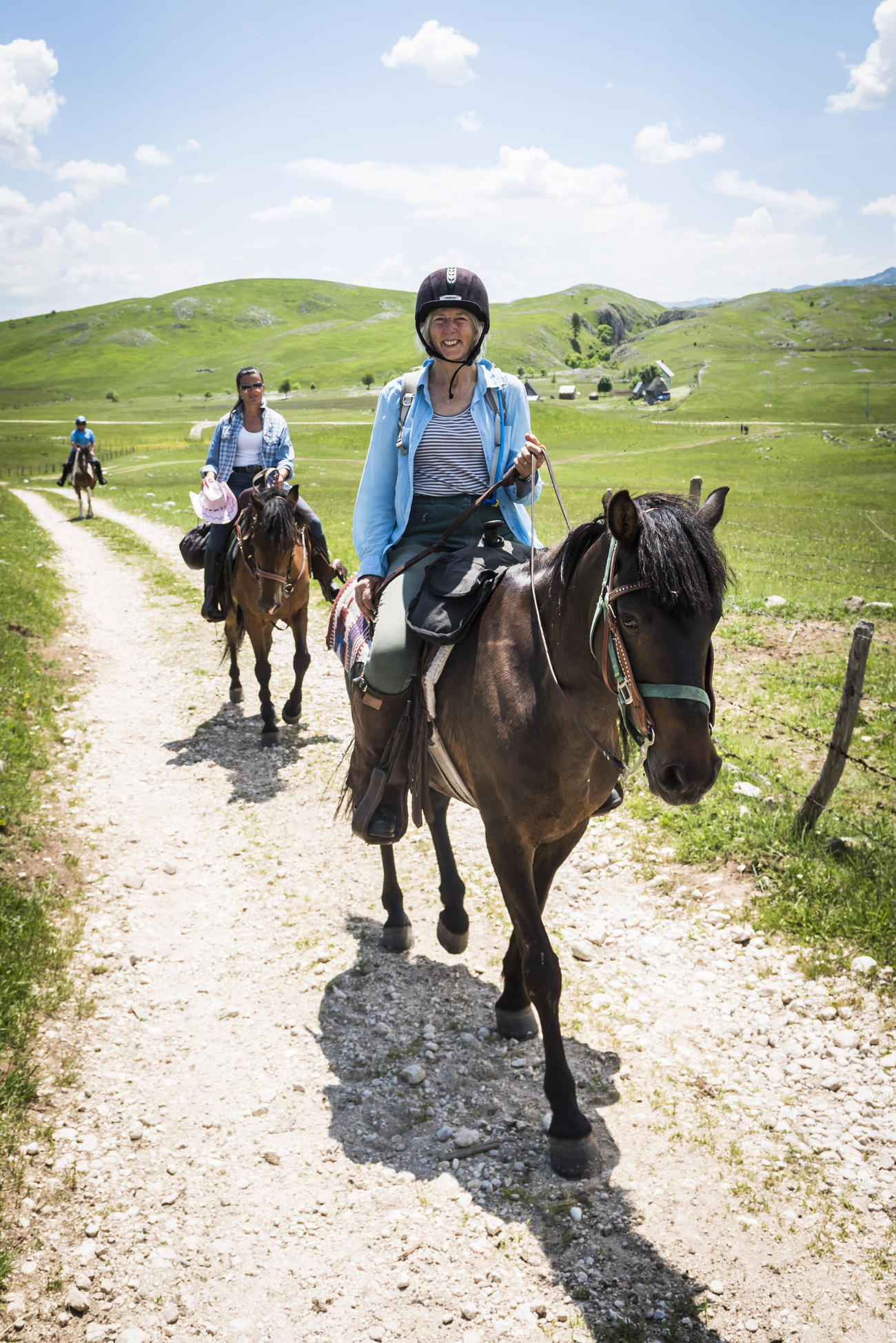WF traveller Caroline Alexander recently went on our first Montenegro Horse Ride group tour. Below Caroline talks about her experience of exploring this beautiful country on horseback.
Riding through the mountains of Montenegro in early June was a delight of blue skies overhead, flower-filled pastures underfoot and spectacular views all around. Masses of purple pansies, bright forget-me-nots and hauntingly blue gentians contrasted with a carpet of yellow buttercups and cowslips dotted with huge magenta and cream orchids.
The horses picked their way with unfailing stamina up steep hills, down stony tracks, through remnant snowdrifts and across patches of compacted grass where melting ice made way for a flush of crocuses.

Lunchtime and overnight stops were hosted by local families who, only a few weeks earlier, had moved up to the summer pastures with their cows, pigs, sheep or goats and were maintaining the time-honoured tradition of making cheese (in thin, pasta-like sheets) and 'sour cream' on a daily basis and washing it down with 'rakia' fruit brandy or (the more healthy option) mountain tea brewed from a blend of dried yarrow and marjoram.

Overnight stays, often in wooden cabins, were examples of genuine mountain hospitality with copious quantities of simple food. Spinach 'pie' was served for almost every meal along with cheese and yoghurt, but otherwise the staple fare was plain, boiled potatoes – with goulash or grilled meat, trout (on request) or omelettes. Even the most primitive shepherd huts produced bowlfuls of doughnuts which could be dipped in local honey as a pudding... or breakfast. Fruit was absent from the mountain diet in June but, at lower altitudes, exquisite wild strawberries were there for the picking.
The sound of skylarks accompanied us everywhere and there was a timeless quality to the views of sheltered valleys dotted with homesteads, freshly-cut haystacks and neat mounds of firewood. But it was obvious from the number of derelict wooden buildings that the pastoral life is unsustainable. Government aid is protecting the flora and fauna of the National Parks, and interest-free loans are helping families to replace the old wooden dwellings with breeze-block and corrugated iron but the pastoral life is too tough to attract younger generations and, without regular grazing, the floral diversity of the meadows will diminish.

Eco-tourism is in its infancy here but well-marked hiking and cycling trails link eco-huts and homestays, providing extra summer income. In winter, small ski resorts offer very competitive prices. Despite not being a member of the EU, Montenegro has adopted the Euro and we frequently found ourselves doing a double-take when presented with a bill – €0.60 for a coffee, €1 for a beer.
Coincidentally.......
A hundred years ago, during World War 1 and in the winter of 1915, a very different group of English people crossed that same range of mountains – retreating from Serbia (and the advancing German army) and heading to escape via the coast of Albania. The intrepid Mabel Stobart led her troop of nursing auxiliaries on horseback across snowy passes and through icy rivers – and all survived. Our trip was only a week; their journey was three months but they too would have benefited from the local hospitality and been sustained by cheese, sour cream, rose-hip jam, dried meats and herbs. They too would have sheltered overnight in wooden huts, forded rivers and ridden through miles of untouched beech forest – but would probably have consumed a lot more rakia to keep warm!
